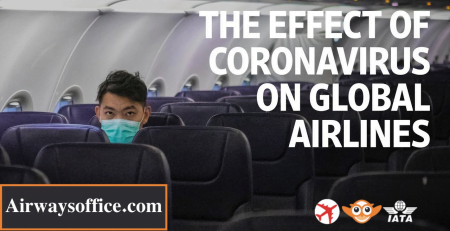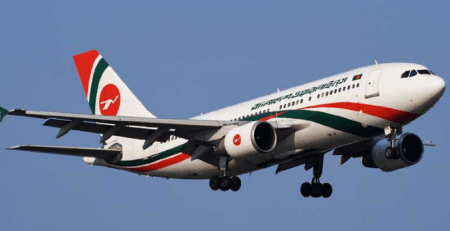COVID-19 – How Airlines are Being Grounded?
- COVID-19 has seriously disrupted the airline industry.
- Most countries have travel advisories – or outright bans – in place to limit the spread of the virus.
- The combination of trip cancellations and country-specific restrictions on international flights cost the industry $880 billion. Coronavirus COVID-19 viral infection China Hubei Wuhan contagion spread travel trade health industry economics
China has experienced a 71% drop by global flight capacity, as compared to February 2019.You’re Grounded: The COVID-19 Effect on Flight Capacity
It’s not an exaggeration to mention that the COVID-19 pandemic has thrown the planet into a tailspin.
As the number of latest cases continues to surge in parts of the planet, numbers are starting to decline in others as public health officials and governments tirelessly work to slow the contagion and reach of the virus.
The potent combination of trip cancellations and country-specific restrictions on international flights has had a staggering impact on the $880 billion global airline industry. Today’s visualization highlights data from the OAG Aviation Worldwide, which tracks how global flight capacity differs from last year’s numbers.
Asia Faced the primary Hard Landing
Nearly all countries have some sort of travel advisory in situ, with many encouraging people to avoid non-essential travel even before COVID-19 was officially considered an epidemic by the planet Health Organization (WHO).
The earliest impacts of those were felt in February, as flight capacity in and out of China dropped sharply around Lunar New Year. Also, the country’s sharpest year-over-year drop was recorded on February 17, 2020, with a 71% drop by flights compared to an equivalent date in 2019.
Flight capacity for Hong Kong, which was already seeing its traveler numbers declining thanks to months-long protests, continues its slump. As of March 16, 2020, it had been down by an immense 81% compared to 2019 – the foremost of any jurisdiction represented within the data.
Monitoring things Elsewhere
Meanwhile, in Europe, Italy saw a 22% drop by flights coinciding with the announcement of a national lockdown on March 9, 2020. Now that things have intensified, flights to and from Italy have plummeted 74% from their normal rates.
On March 11, 2020, the U.S. enforced a 30-day ban on travelers from the Schengen Area, a free-travel zone consisting of 26 countries in Europe. Although the united kingdom and Ireland were initially exempt, the ban has since been extended to incorporate both countries also.
Meanwhile, as of March 17th, the U.S.-Canada border is closed for all non-essential travel. This follows a previous announcement from the Canadian government that it might be curbing entry to only Canadian citizens, relations, permanent residents, diplomats, and Americans.
Broadly speaking, countries around the world are taking similar actions to limit the spread of the virus and “flatten the curve”:

Coronavirus COVID-19 viral infection China Hubei Wuhan contagion spread travel trade health industry economics
These are the measures countries have taken to prevent the spread of COVID-19.
Image: Visual Capitalist
More Turbulent Times Ahead?
As both COVID-19 and therefore the global response thereto continues to evolve, here are the most important flight capacity reductions across a couple of more countries within the past week:
 Coronavirus COVID-19 viral infection China Hubei Wuhan contagion spread travel trade health industry economics
Coronavirus COVID-19 viral infection China Hubei Wuhan contagion spread travel trade health industry economics
Many airlines worldwide face bankruptcy thanks to the widespread disruption.
Image: Visual Capitalist
Naturally, the economic impact on airlines has been immense. Nearly 40% of flights impacted by the ECU travel bans are U.S. based, like Delta and United Airlines, with billions in lost revenue already estimated for this year.
Many airlines worldwide face the threat of bankruptcy in the coming months, if these declining trends continue. To hedge against these domino effects of the outbreak, U.S. airlines are requesting upwards of $60 billion in bailouts and direct assistance from the govt.
COVID-19 is throwing everything up within the air—including the fate of airline companies. It’s not yet clear when these stringent travel restrictions could also be lifted, but one can only hope that these airlines don’t need to still weather the storm for much longer.
Find more aviation news and services, visit our website here













